Easy Way to Keepchickens in Fencedin Yard
TABLE OF CONTENTS
- ADVANTAGES FOR KEEPING CHICKENS
- CHICKEN BREEDS
- CHICKENS AS PETS
- KEEPING CHICKENS IN THE BACKYARD
- CLIPPING YOUR CHICKENS WINGS
- HOW MUCH SPACE PER BIRD
- COUNCILS, LAWS AND GUIDELINES
- BUYING CHICKENS
- RAISING CHICKENS FOR EGGS
- SAFE FROM PREDATORS
- FOX PROOFING
- SNAKE PROOFING
- CHICKEN COOPS FOR THE BACKYARD
THE ULTIMATE GUIDE TO KEEPING CHICKENS IN AUSTRALIA
You've obviously heard all the great reasons to have some chickens in your backyard and now you've decided to take the plunge.
So, you need some solid information on how to look after them – welcome to the Ultimate Guide for Keeping Chickens in Your Backyard.
WHAT DO I NEED TO KNOW ABOUT BUYING MY CHICKENS?
There are more than 400 breeds of chickens in Australia so you need to decide on what type of chicken you want.
Each variety of chicken comes with their own unique qualities and yes, chickens have real personalities.
Think about:
- Do you want chickens solely for their eggs?
- Are your chickens to be friendly pets for your children?
- Do you want chickens with tasty flesh?
- Will they thrive in your local climate?
Bantams are smaller versions of the standard breeds of chickens and are often a great choice for first-time backyard hen owners.
Bantams take up less space, eat less, and tend to be friendlier than their larger versions and yet will often lay just as many eggs.
Poultry can be prone to some serious diseases so make sure you buy your chickens from reputable sources who can supply the required vaccination documentation.
If you buy one-day old chicks to raise they must be vaccinated against Mareks disease. Other recommended or required vaccinations include:
- Fowl pox
- Infectious laryngotracheitis
- Infectious bronchitis
- Newcastle disease
HOW MANY CHICKENS CAN I KEEP?
Chickens are social birds so you should have more than two birds: three or four is a good minimum number.
Council regulations and your available space will limit most residential chicken owners to a maximum of ten birds.
Avoid the all too natural tendency to fall in love with your girls and want lots and lots of them.
Chickens need their own space and overcrowding will cause problems so think carefully about how much available space you have.
Back to Top
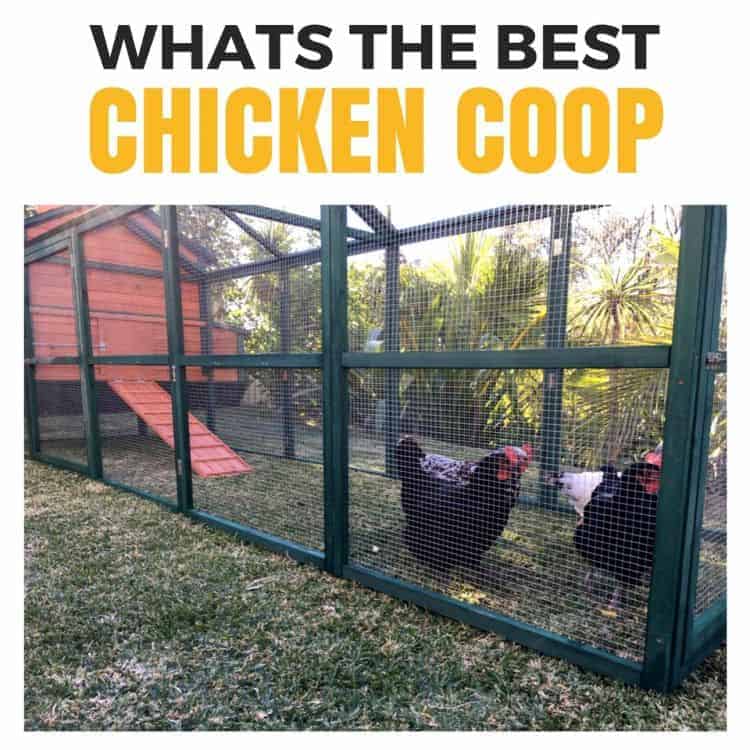
WHAT SORT OF CHICKEN COOPS DO THEY NEED?
Although they are reasonably hardy, chickens need to be protected from weather extremes and have a safe and dry place to sleep and nest.
Somerzby have a great range of chicken coops that will provide the perfect solution for your chicken housing.
Although no permit is required to build or erect a coop in most Australian residential areas chicken coops must comply with Council regulations and be escape proof.
Your hen house must be no taller than 3m or larger than 152m.
How much coop space per chicken?
Chickens tend to roost close together to keep warm but overcrowding will lead to some very unhappy and unhealthy chooks.
According to Dr. Mikelle Roeder, nutritionist for Purina Animal Nutrition, " for the best results you should allow at least 4 square feet / .37 square metres of area per bird inside the coop ".
Nesting boxes need to be very attractive places for your girls to lay their eggs and you may find that each hen requires her own nesting box so don't make them too big…
… chicken nesting boxes should probably measure around .37m3, which will give them enough room to turn around, rearrange the bedding and get comfortable.
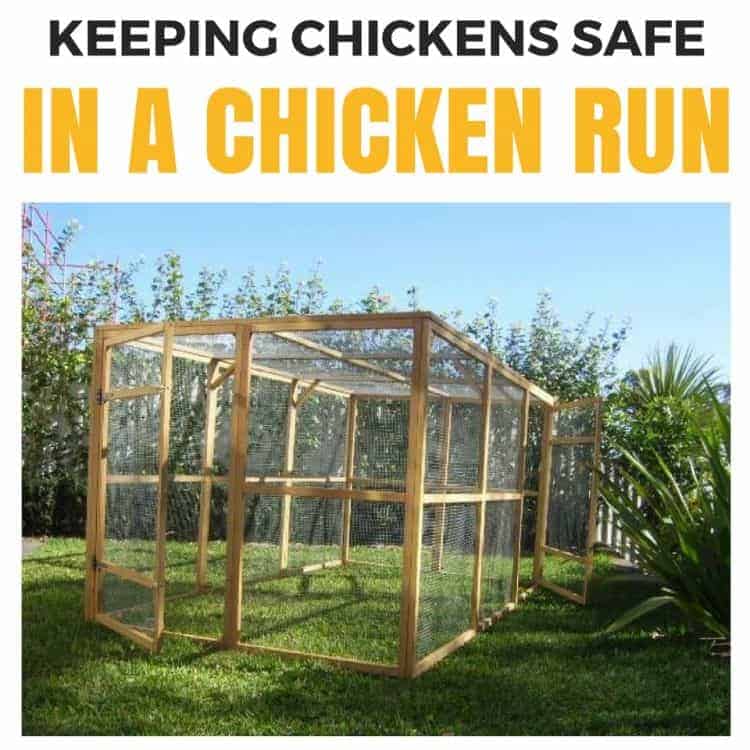
Outside Runs
The bigger the better.
The more space your girls have to explore and scratch around the happier they'll be and you'll be less likely your backyard will end up looking like a wasteland.
Your chicken coop should not only prevent your girls escaping into the neighbour's place but needs to protect them from predators such as foxes, dogs, snakes and rodents.
This means that wire netting on the walls and roof of the run should be at least 1mm thick and have aperture sizes no larger than 10mm.
Many predators can dig underneath coop walls and kill your chickens or steal their eggs.
To prevent this you can put netting on the floor, place the coop on a hard surface such as concrete, or add an extra netting apron over the ground stretching out from the wall or dug into the ground.
Back to Top

WHAT SORT OF BEDDING DO THEY NEED?
The ideal bedding for your hens needs to absorb urine without becoming too damp and mouldy.
Good quality pine shavings (do not use sawdust) are a good choice.
Shredded cardboard also works well. Good quality straw is another good option but avoid hay, which can become mouldy very quickly.
Shredded paper is O.K. but you will need to change it frequently before it starts to smell and create unhealthy conditions for your girls.
WHAT SHOULD I FEED MY HENS?
Many experts recommend a good quality commercial feed pellet as the easiest way to ensure your hens are getting all their daily needs for proteins, carbohydrates, minerals, and vitamins.
You can also make your own feed but you do need to get the right mix of ingredients.
Plenty of fresh clean water is also vital.
You should also add:
- Vegetables such as spinach, cabbage, and silver beet
- Fruit (but not citrus)
- Grains such as wheat and corn but not too much, as they have a low nutritional value for chickens
- Grit to aid digestion
As egg production requires a lot of minerals and vitamins some calcium and vitamin supplementation may be necessary if your hens are producing a plentiful supply of eggs.
Avoid certain foods such as uncooked rice, rhubarb, avocado, chocolate, onion, garlic, citrus fruits or lawn mower clippings as these can cause problems.
HOW DO I CARE FOR MY HENS?
Hens are relatively low maintenance birds.
On a daily basis you will need to give them fresh supplies of food and clean water.
Take a good long look at your flock every day observing their state of health.
Seek expert advice if you notice any hens that are listless, not eating or displaying other worrying signs.
Collecting your fresh delicious eggs each day will be a job you or your children will love doing both for the excitement of discovering new eggs (sometimes hidden in surprising places) and the interactions with your hens.
A well designed coop such as the Somerzby range of coops will provide easy access to the nesting boxes making this job really simple.
Every few weeks you will need to clean out the nesting boxes and coop and replace the bedding.
The Somerzby range of hen houses make this job so easy with cleverly designed slide out metal trays.
Keep an eye open during the changes of season to make sure that your girls remain warm, dry, and protected from cold winds during the colder months and don't overheat in the hot months.
If you let your girls out to roam during the day make sure that they are all tucked up safe and sound in the hen house for the night and that the hen house door is securely latched to prevent predators gaining access.
WHAT DO CHICKENS DO ALL DAY?
Normal, healthy chickens like to feed, preen, forage, and take frequent dust baths.
They also like to roost where they can take a bird's eye view of the world.
When you first get some chickens there might be an initial establishing of the pecking order in the first week or so but behaviours such as over-zealous pecking, eating eggs, and going off their food need some action.
The Somerzby range of hen coops are designed to provide safe and comfortable roosting and nesting spaces for your hens.
Congratulations on joining the chicken lover's family. As you spend time with your girls you'll come to love their many quirks and different personalities.
Follow the links to learn more about keeping your hens healthy and happy.
Ever wondered about getting some chickens for your backyard.
So What are you waiting for?
If you're still not convinced, here's just a few more reasons why you should consider getting a few chooks your backyard
THEY LOVE TO HAVE A GOOD CHAT
Chickens can be surprisingly chatty and conversation with your girls will cover a broad range of topics from a gentle cluck, cluck, clucking over the injustices of life to an in-depth exposé of the political life and pecking order in the chook house.
And although their singing abilities are not so great and your chickens will never be another Bee Gees or Crowded House they can make a surprising range of sounds.
You can also pour your own life story out to your girls and receive sympathising clucks in response.
GREAT FOR THE BACKYARD
One of the great advantages of keeping chickens in your backyard is that they can help control pests in your garden.
Let your chooks loose in an unused area of your veggie garden and they'll happily eat their way through large numbers of those pest insects.
Your girls will even leave behind some fantastic manure at the same time.
Chickens will do wonders for your garden!
CHICKENS ARE CHEAP TO KEEP
If you want to know how much the chickens cost, then you'd expect to pay between 5 – 10 dollars for a baby chick.
It costs very little to keep chickens fed and healthy. Chickens are great food waste disposal experts and will happily forage for insects in your garden.
You may need to buy a few additional nutritional supplements but other than that chickens don't need much.
As excellent egg producer's chickens are very cheap to run and will save you a bundle over supermarket eggs.
COMPANIONSHIP AND HAPPINESS
Chickens are very friendly, sociable creatures and they enjoy a good cuddle.
Chickens make great pets.
Your children will love them and your feathered girls will respond with oodles of affection.
And chickens are a great way to teach children about the need to care for other creatures.
Back to Top

THEY ARE GREAT EDUCATIONAL VALUE
Chickens are a great way to teach your children how to look after chickens, it also teaches them where their food comes from.
If you live in a city area, it's likely your kids have never seen a chicken outside the supermarket shelves.
Having one living in your backyard will teach them about real food, and also instill a level of self-sufficiency into the family by providing you with fresh, organic eggs.
Using these eggs in the kitchen when cooking with your children is a particularly easy way to build an appreciation for where their food comes from.
This self-sufficiency means that you get to determine how the chicken is treated throughout the laying process and you can teach your children about nurturing animals.
CHICKENS BREEDS, SO MANY TO PICK FROM
There are more than 400 different breeds of chickens and the variety of colourings and plumage is quite extraordinary.
We'll share with you the list of chicken breeds in Australia, and how you can pick the best egg laying chook for your backyard.
Many people turn to raising their favourite breed as a hobby or even as a professional breeder.
However, you look at chickens they are great little birds deserving of love and affection and a place in your heart and backyard.
Do yourself a favour and get some chickens.
And Somerzby have a great range of chook runs and chook houses to make keeping your home range chooks so easy and so much fun.
To view our full article (snippete featured below) on all the Chicken Breeds in Australia Click Here!
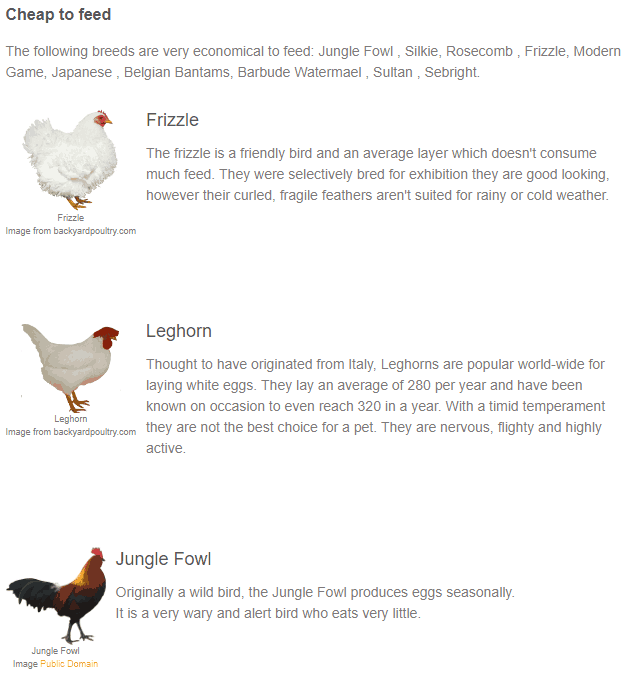
CHICKENS AS PETS
Chickens have long been an addition to many family homes, not only do they provide eggs for their families, reduce food waste and fertilize the garden, they are the perfect pet for educating your children on nature, responsibility and health.
If you're looking for an inexpensive and relatively low maintenance first pet for your children, then chickens are a great choice.
Their coops require cleaning just once per week (a lot less than the twice per day required for a kitty litter tray) and love to socialize with other chicken friends.
Chickens have their own personalities and will interact with children, most don't mind being picked up and stroked and can even be taught to come when called.
They can help reduce waste by being fed food scraps from the dinner table and are great soil fertilizers. They will even take care of any pest problems you have too!
KEEPING CHICKENS IN THE BACKYARD
The reality is simple, if you want to keep chickens in the backyard, then council regulations require you to have an escape proof chicken coop.
If you do let them out during the day to range in your garden you must be absolutely certain that they cannot escape to your neighbour's veggie garden.
Keeping your chickens safely within your well-fenced backyard is imperative for three reasons:
• To stay within the law
• To avoid upsetting your neighbours
• Protecting your chickens from predators including neighbourhood dogs
Many chicken varieties, especially heavier breeds such as Orpingtons, do not fly well at all but some can and do, so, what are your options to avoid falling fowl of the law and your neighbours?
Back to Top
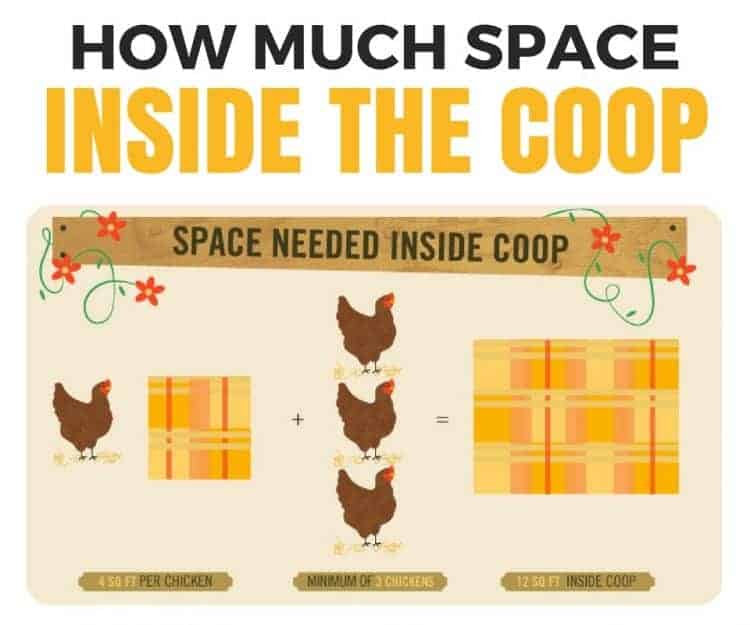
HOW MUCH SPACE DO CHICKENS NEED IN COOP AND RUN
When it comes to coop and run sizings,Dr. Mikelle Roeder, nutritionist for Purina Animal Nutrition recommends the most importants pararmeters for your flock are:
Coop – In general the space requirements for the birds will vary depending on the size of the bird…
"… but generally for the best results you should allow at least 4 square feet / .37 square metres of area per bird inside the coop."
That's what they call the4 – 10 square rule.
Allowing more space either indoors, outdoors or both significantly decreases problems with bullying, egg eating and appears to keept the flock healthier.
NESTING BOXES
The general rule is one for every four to five hens.
Nesting Boxes shouldn't be too roomy, and for sizing the nest box you should allow 1 foot / 30 cms high, by 1 foot / 30 cms wide, by 1 foot / 30 cms deep.
The nesting boxes can be made from either wood, metal or plastic, but try not to mount them on the north facing wall to help keep your hens warm in winter.
ROOSTING PERCHES
For roosting perches allow about 9 inches / 22 cms of space per bird and each perch should be seperated by about 1 foot / 30 cms.
Avoid using metal or plasic as these can become slippery and in winter the metal can become very cold which is no good for the birds feet.
HOW MUCH SPACE DO CHICKENS OUTSIDE THE RUN
… and for outside the coop, for the best results you should allow about 10 square feet / .92 square metre of outdoor space per bird."
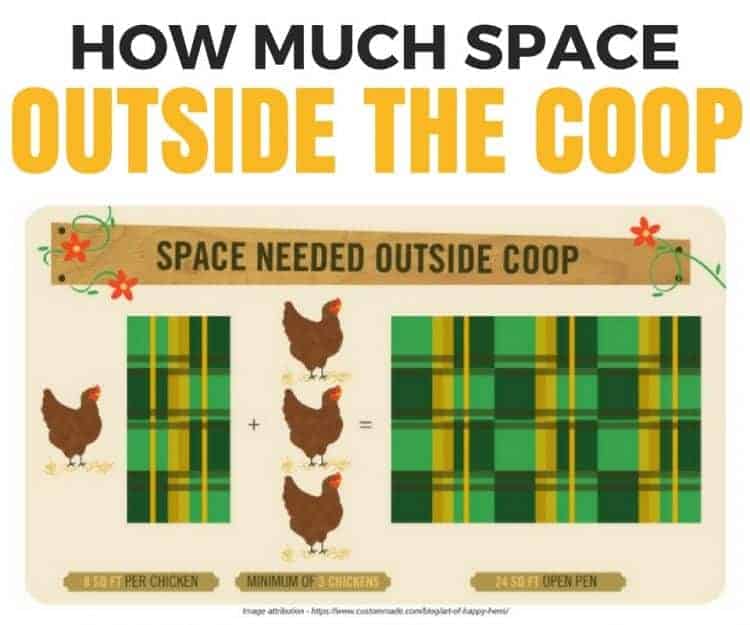
SETTING UP A CHICKEN COOP
A roof of chicken wire over the chicken run will prevent chickens escaping.
A chicken wire roof is included in all Somerzby chicken coops and some of the Somerzby range, e.g. the Homestead extra-large run, have enough space for your chickens to get in a real flap and stretch their wings.
Sometimes chickens fly simply to explore new territory and find new food supplies so keeping them well fed and entertained will help reduce your chickens' tendency to fly the coop.
The Somerzby lodge has wheels allowing you to move it around the property to give your girls some new ground to explore.
Back to Top
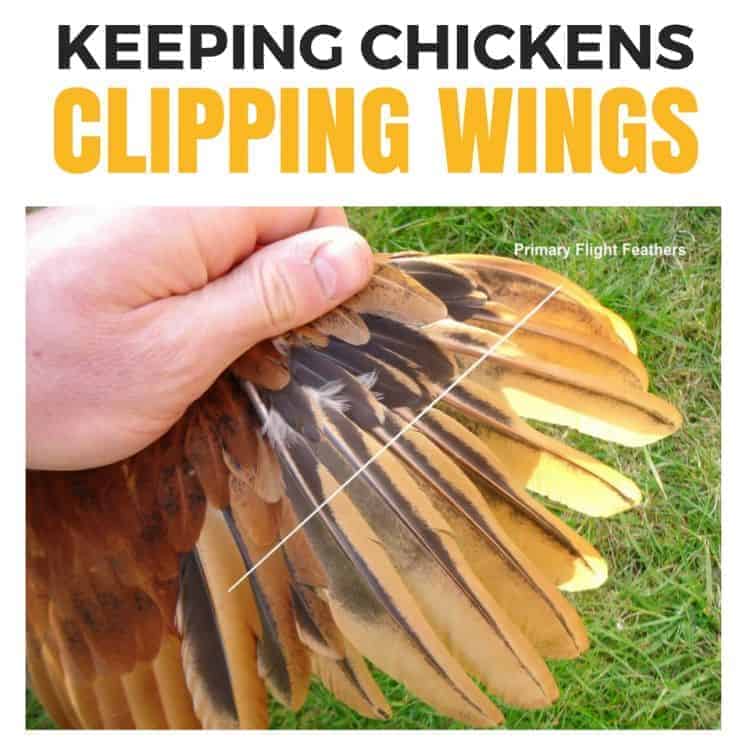
WING CLIPPING
Wing clipping is an established practice and is less cruel than it sounds (if done correctly) but it may not always be successful.
The cut feathers will grow back and so will need re-cutting after every moult but in some cases once the chickens experience their clumsy unbalanced flight they may stop trying.
You should clip only one wing so that the chicken is unbalanced when attempting to fly. Some experts suggest that very skilful fliers may need to have both wings clipped but with one side shorter than the other.
SO HOW DO YOU CLIP THEIR WINGS?
Firstly you need some sharp scissors or wire cutters.
Next, identify the primary feathers.
These are the outer flying feathers found at the wingtip; there are usually ten of them.
It is important to avoid cutting feathers that are still growing and have a blood supply but the safe-to-cut non-growing primary quills are normally clear and white.
You'll need to reduce the length of the primary feathers by as much as 50% on one wing only. As long as you avoid cutting the growing feathers this won't hurt the bird.
If this doesn't stop your charming chicks from escaping into the wild blue yonder you may need to cut the secondary feathers.
These are the flying feathers found closer to the chicken's body.
Again, only cut back to around half of the feather's original length.
Don't cut more than you need but if you do make a mistake the feathers will grow back.
If you feel squeamish about cutting the feathers completely you can try simply cutting off the feathery material either side of the quill.
This is a considerably longer process but it won't damage the feather structure itself.
Somerzby making life with your chickens a breeze thanks to helpful, expert advice.
Back to Top
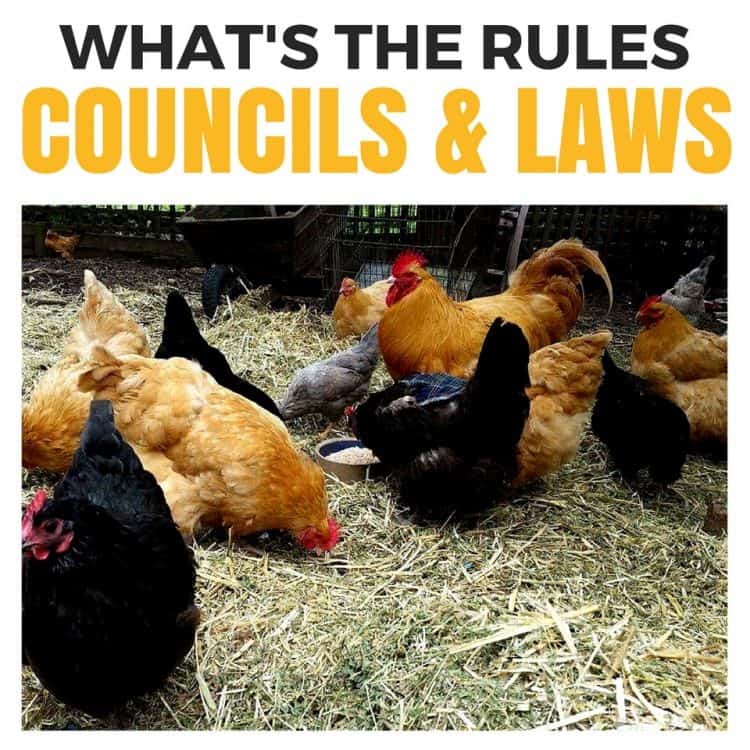
COUNCILS, LAWS AND GUIDELINES
Yes, the Australian government and your local councils all have something to say about your planned suburban backyard retirement village for happy and fulfilled chickens.
But these rules are there to protect the health of your chickens, Australia's poultry industry and your neighbours and they should pose no real problem for you or your chickens.
The laws and guidelines may vary from State to State and Local Government Authorities may also add additional stipulations so it's important to do your research before you buy your chickens, coops and other assorted chook paraphernalia.
The size of your section and zoning laws in your area will also affect your chicken ranch dreams so check out your local LGA website.
HOW MANY CHICKENS CAN I KEEP?
As a general rule in NSW you may keep up to 10 chickens in a residential area without a permit but it will only ever be a hen party because no roosters are allowed.
Roosters, by nature, set up an infernal racket in the early hours of the morning and your neighbours will not be happy.
Other States, such as Victoria, may limit you to as few as four chickens.
CHICKEN COOP REQUIREMENTS
Although no permit is required to build or erect a coop in a NSW residential area it must comply with the following:
• It must not be taller than 3m above the existing ground level or have a floor area of more than 15m2
• Must be located in the rear yard at least 3m from each lot boundary, and at least 4.5m from any dwelling, public hall, school or premises used for the manufacture, preparation, sale or storage of food
• Enclosed to prevent the escape of poultry
• Have adequate roof water drainage that doesn't create a nuisance to adjoining owners
• Be constructed of non-combustible material if it is situated in a bush fire zone and is less than 5m from a dwelling
• Limited to one coop per property
Some councils may require your coop to have an impervious floor such as cement under the nesting area. If you live in a rural area the rules are more relaxed.
EXAMPLE COUNCIL ENVIRONMENTAL PLANNING POLICIES
- New South Wales
- Queensland
- Victoria
- North Territory
- Western Australia
- South Australia
BUYING CHICKENS?
If you want to buy chickens, make sure it's from a reputable breeder and ask for vaccinations records.
If you buy one-day old live chicks to raise they must be vaccinated against Mareks disease.
Other recommended or required vaccinations include:
• Fowl pox
• Infectious laryngotracheitis
• Infectious bronchitis
• Newcastle disease
It is considered best practice to buy all your chickens from the one breeder to avoid transferring any existing diseases from one group of hens to the other.
Keep new chickens in isolation for at least 14 days.
Some poultry diseases have the potential to devastate other key areas of Australia's agricultural industries so you need to ensure that your chickens are in great health.
Back to Top
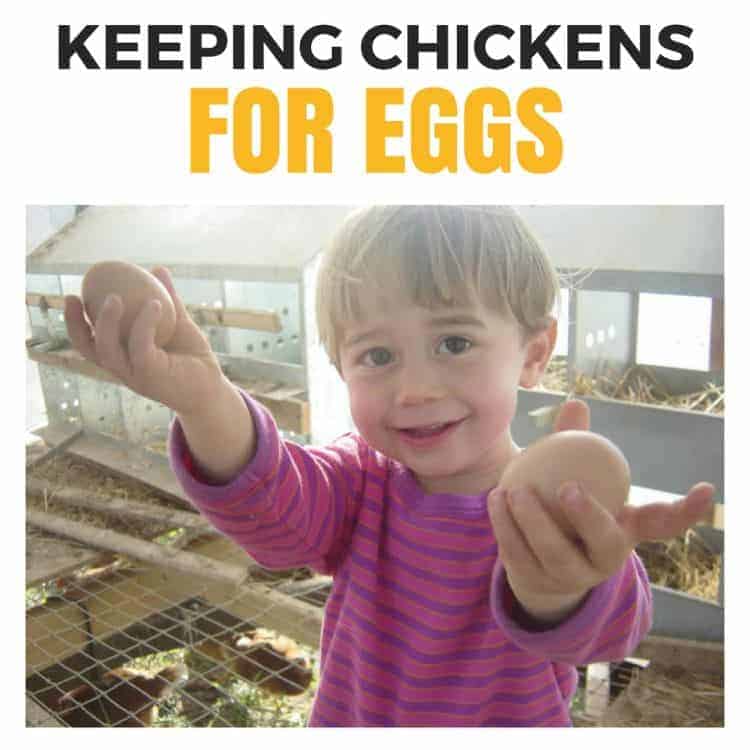
KEEPING CHICKENS FOR EGGS?
Look after your chickens and they will produce generous quantities of fresh protein-rich eggs.
Fresh free-range eggs are richer in those healthy omega-3 acids and vitamins than cage chook eggs.
Say a resounding 'no' to battery raised chickens and raise your own free-range organic chooks and eggs.
You get to control what goes into your eggs and it's better for you and it's better for chickens.
The best chicken for laying eggs is the Austrolorp, see our in-depth guide for more info…
And if you are using the eggs for personal consumption or to give away to family and friends you do not need to be registered as a food business.
If you intend to provide eggs for retail or catering purposes there are strict requirements around registering your business and food labelling.
Don't forget, the rules will vary from Council to Council so do check first.
NUTRITIOUS & TASTY
Chicken eggs have always been considered a very nutritious and tasty addition to the menu but unhealthy battery farming practices used in modern commercial egg production have encouraged a lot of people to return to the good old days of raising their own chickens and home grown eggs.
The advantages of producing your own eggs are obvious: you control the chicken's diet and therefore what goes into your eggs.
The result: healthier, tastier eggs.
WHAT ARE THE BEST EGG LAYING CHICKENS?
With more than 400 chicken breeds to choose from deciding on the right breed for your needs can be a challenge.
Do you want chickens solely for their eggs or are they pets as well?
Do you want egg producing chickens with tasty flesh?
Will they thrive in your local climate?
These are just some of the questions you need to ask.
Most common Australian chicken breeds lay reasonable quantities of eggs but if a plentiful supply of eggs is your primary goal then you want to think about the breeds below.
Australorps (Australian Orpingtons) are a common choice. They are excellent egg producers averaging around 250 to 300 large eggs a year.
In fact, the Australorp breed gained real world-wide popularity in 1922 when six hens laid 1,857 eggs over a 365 day trial for a new world record. Australorps are quiet natured and good with children. They also cope well with cold weather.
Isa Browns are another very common choice. Isa Browns are excellent egg producers averaging 300 or more medium sized eggs each year. Isa Browns are a good choice for first-time chicken owners because they are hardy, coping easily with coldest Australian regions and they are very friendly.
Wyandottes are another great egg laying chicken producing around 200 eggs each year. Wyandottes are very calm and gentle chickens and they thrive in cold conditions.
Rhode Island Reds are a great choice if you live in an area that gets both temperature extremes. They are a friendly, hardy breed that will average more than 250 eggs each year.
Leghorns are very prolific layers producing around 300 eggs each year. The chickens will be quite happy in all weathers coping well with both heat and cold but they are not a great choice for a family pet, as they tend to be unfriendly.
WHAT SPECIAL FOODS DO CHICKENS NEED FOR GOOD EGG PRODUCTION?
A lot of calcium is used up for egg production and so you need to look out for any chickens showing signs of calcium deficiency. Thin, weak egg shells that break easily might be your first sign that they're not getting enough calcium.
Make sure your chickens are getting good quality calcium in their grit.
Some people use crushed egg shells as a cheap source of calcium but if you do this make sure you crush the egg shells into a fine powder otherwise the chickens might develop a taste for their own egg shells and begin intentionally breaking their eggs.
Supplementation with vitamins A, D, and E might also be necessary to help maintain healthy calcium levels.
Chickens also drink a lot of water—as much as 500mls up to a litre a day for each bird in hot weather.
DO I NEED A ROOSTER?
If your goal is only to produce fresh tasty eggs then no you don't. A rooster is only needed if you want fertilised eggs that will turn into little chickens.
In any case, having a rooster is illegal in most Australian urban areas.
The Somerzby range of chook runs, tractors, and chook houses are all designed with great nesting boxes that provide a calm, sheltered nesting area and easy access for collecting your daily fresh eggs.
Somerzby also have feeders designed to minimize wastage and mess.
Back to Top
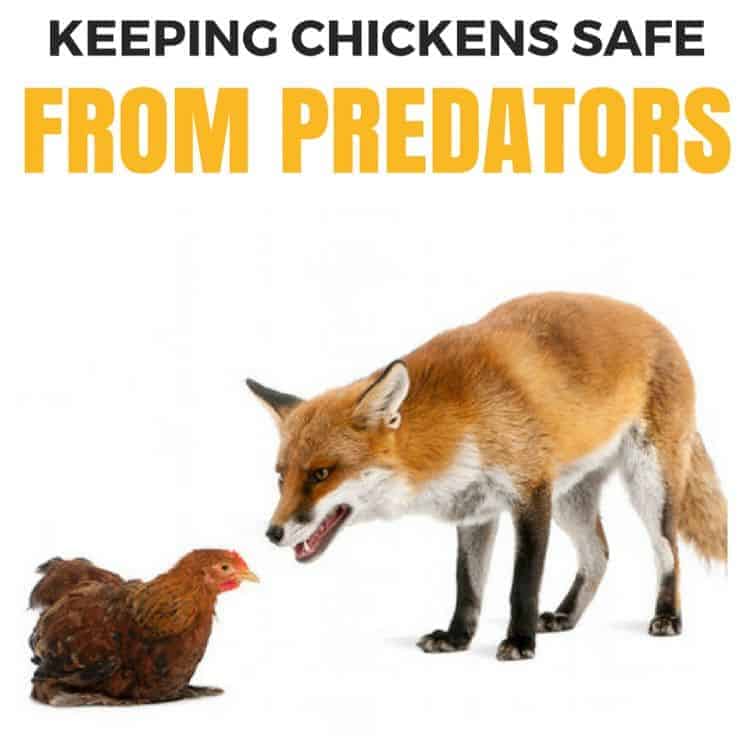
KEEPING CHICKENS SAFE FROM PREDATORS?
Keeping a guard dog can be effective but it's no use letting the dog sleep inside the house at night.
And a determined fox may still have a go at your chickens despite the presence of your dog.
Some people have had success using various types of repellents including motion triggered lights.
Foxes have learned to associate lights with being hunted by humans and will often stay away.
Motion triggered sprinkler systems may also work.
Chemical repellents (both organic and synthetic) are used overseas with varying degrees of success but be aware that the use of some of these substances may be strictly controlled by Australian law.
Keeping your compost bins covered and removing any old pet food or food scraps around the property will also help to reduce the attractive smells that draw the foxes to your backyard.
It's also a good idea to keep the backyard clear of any rubbish or objects that might give the foxes a place to hide or allow them to approach your chickens under cover.
Don't forget that foxes are excellent climbers and they might be able to use overhanging trees to bypass your fence.
FOX PROOFING YOUR BACKYARD
Unfortunately, foxes love your chickens as much as you do…
…but probably for very different reasons.
Foxes were introduced to Australia in the mid 19th century and have done incalculable damage since then to Australia's native wildlife and farm stock including poultry.
Foxes have become pests even in urban areas.
Their exceptional, climbing, digging and jumping skills combined with their innate intelligence make them an adversary that needs to be taken seriously by any chicken lover.
There are a number of ways to protect your chickens from fox attack including:
• Perimeter fencing
• Coop design
• Trapping, shooting, and poison
• Repellents
Foxes are not fussy eaters and love allbreeds of Australian chickens from Astrolorps to Orpingtons, Rhode Island Reds to Longhorns, and Silkies to Wyandottes so you need to be as wily as a fox to protect your flock.
FOX PROOF CHICKEN COOP
How do I make my chicken coop fox proof?
Your first line of defence in making your chicken run fox proof is fox proof fencing around the perimeter.
Fox proof fence heights need to be considerably higher than 900mm because foxes can easily jump a 900mm fence.
To be safe you probably need to make your fence 1800mm high. You should also add an outwardly curving top to the fence.
Choose your wire carefully.
Fox proof chicken wire netting needs to be 0.9mm in diameter or thicker, as foxes will chew through lightweight wire fences.
The mesh apertures sizes should be no larger than 80mm to prevent foxes climbing through the fence.
You may need to add reinforcing where wire netting panels are joined to prevent Mr (or Mrs) Fox pushing through any gaps.
Foxes are great climbers too so consider adding some protection to your fence posts to make it harder for them. Steel posts are more difficult for foxes to climb than timber.
Electric fencing can be a useful addition but electric fencing on its own will do nothing to deter a determined fox.
You can get reasonably-priced solar powered units that will easily power a few wires around the top of your fence.
See our complete guide on fox proof chicken coops and fences here.

HOW DO I MAKE MY CHICKEN COOP SNAKE PROOF?
Snakes can slither through quite small spaces so you need to make sure your coop is covered with wire mesh with holes no larger than 10mm.
Snakes do climb and of course can go under the coop wall as well so you should ensure the roof is covered as well as the floor with adequate sized mesh.
Alternatively, you can place a mesh apron out from the edge of the coop to discourage the snakes from going under the coop wall.
Placing the coop on a solid surface such as concrete also works.
You can also make the nesting box less accessible by placing it in an elevated position.
CAN I BUY A SNAKE PROOF CHICKEN COOP?
Yes, you can buy chicken coops that are already snake proof.
Some of the Somerzby range such as the Super Deluxe Mansion chicken coop are snake proof.
The Deluxe Mansion is a great snake-proof chicken coop available in an easy-to-build kitset form.
It also features galvanised wire chosen for its anti-corrosion longevity as well as a no snake, no nonsense toughness.
Somerzby providing a truly eggalitarian society for your chickens.
See our complete guide on how to keep your chickens safe from snakes here.
CHICKEN COOPS FOR YOUR BACKYARD
Large chook pens or chicken runs allow your chickens to be healthy happy carefree chickens.
Our Somerzby backyard chook pens are ideal for anybody who wants the pleasure of raising contented chickens while keeping them safe from harm.
Chickens can make great family pets and keeping some chickens is a great way to teach your kids the importance of caring for animals. Other benefits include:
• Lovable companionship—especially for children
• Daily supply of fresh eggs – a great source of healthy protein
• A marvellous supply of rich manure for the garden
• They will happily eat your food scraps and turn them into rich fertilizer or eggs
Chickens, like any pets need to be comfortable and safe so that they can feed in peace.
A very important part of maintaining healthy animals is allowing them to retain their natural behaviours as much as possible.
Our large chicken coops gives your chickens the space to be right proper chooks.
Back to Top
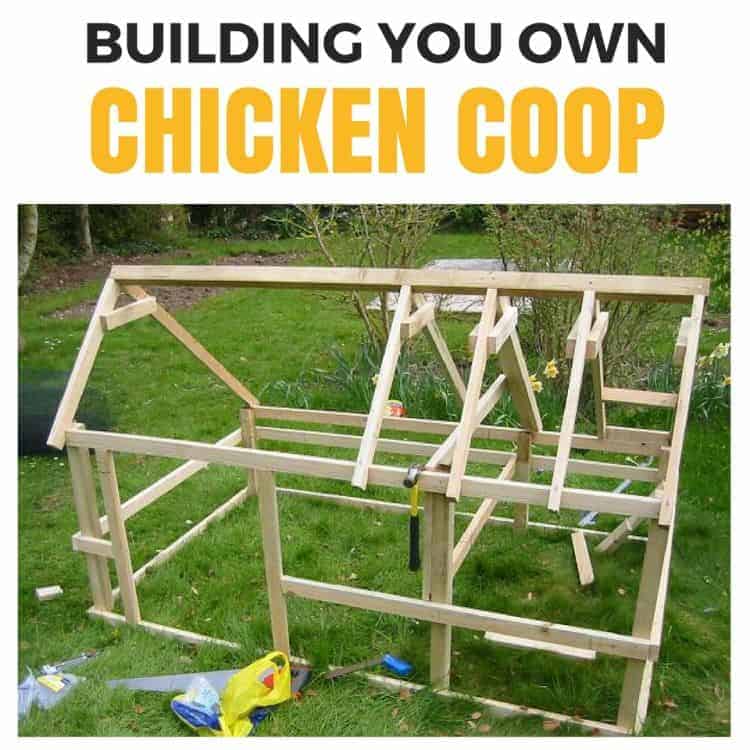
BUILD YOUR OWN
Yes, you could but it will be more expensive and time-consuming than buying one of our specially designed pre-fab chook runs.
The pre-fab chook run comes as a flat-pack in two cartons with everything you need for fast straightforward assembly…
…it couldn't be easier.
All the materials including hinges and screws are provided along with clear instructions for assembly.
Maintenance is minimal—perhaps the occasional drop of oil on the hinges is about it.
Source: https://www.somerzby.com.au/blog/keeping-chickens/
0 Response to "Easy Way to Keepchickens in Fencedin Yard"
Post a Comment